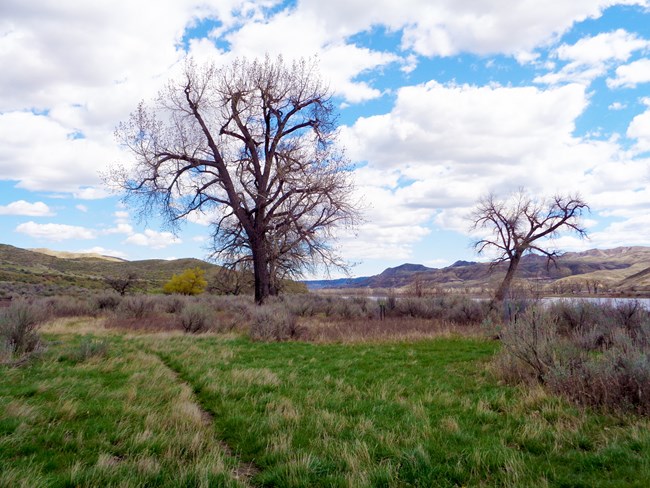Last updated: October 31, 2018
Article
Slaughter Creek

NPS
Meriwether Lewis wrote, “the water appeared to have washed away a part of this immence pile of slaughter and still their remained the fragments of at least a hundred carcases they created a most horrid stench.”
In actuality, the buffalo had drowned when the spring ice broke; their bodies had piled upon the bank at a bend in the river.
Nonetheless, the Captains named this small river Slaughter River, later renamed Arrow Creek. The men would camp here again on their return on July 29, 1806.
The Slaughter River Campsite is one of the High Potential Historic Sites of the Lewis and Clark National Historic Trail. It is approximately 40 miles south of Big Sandy, Montana.
